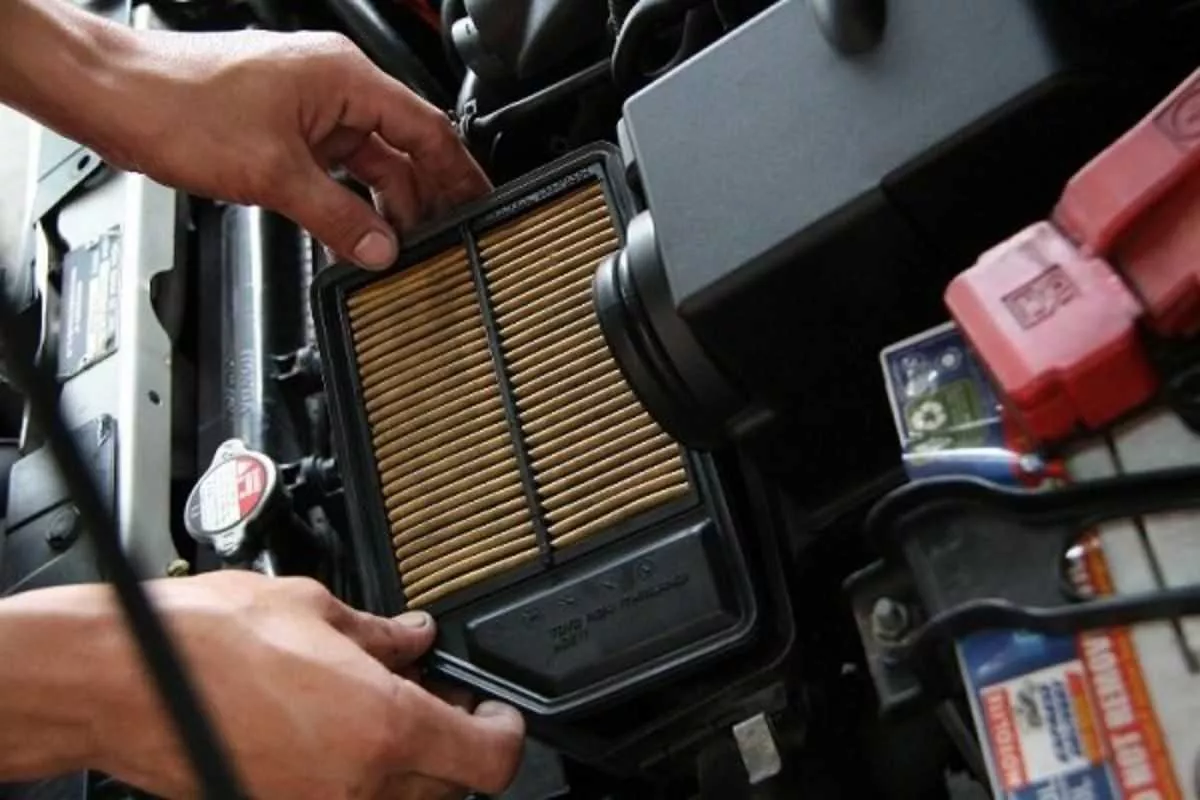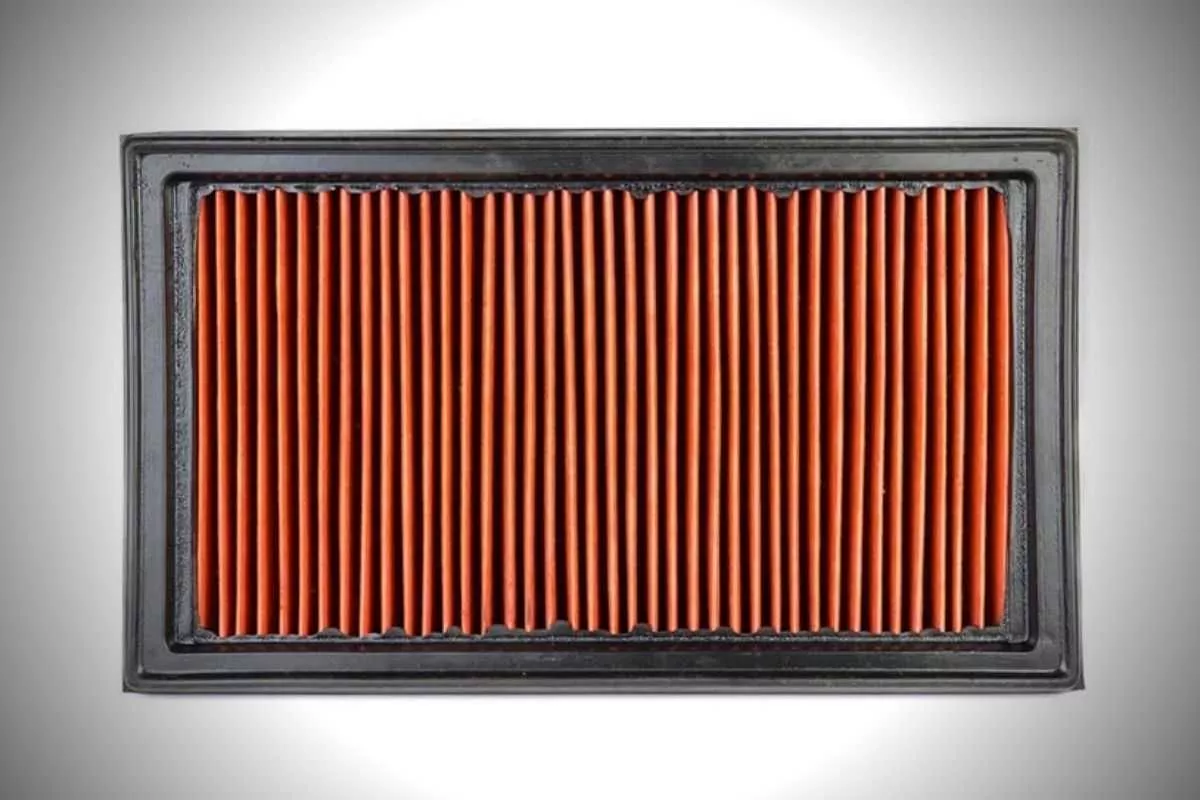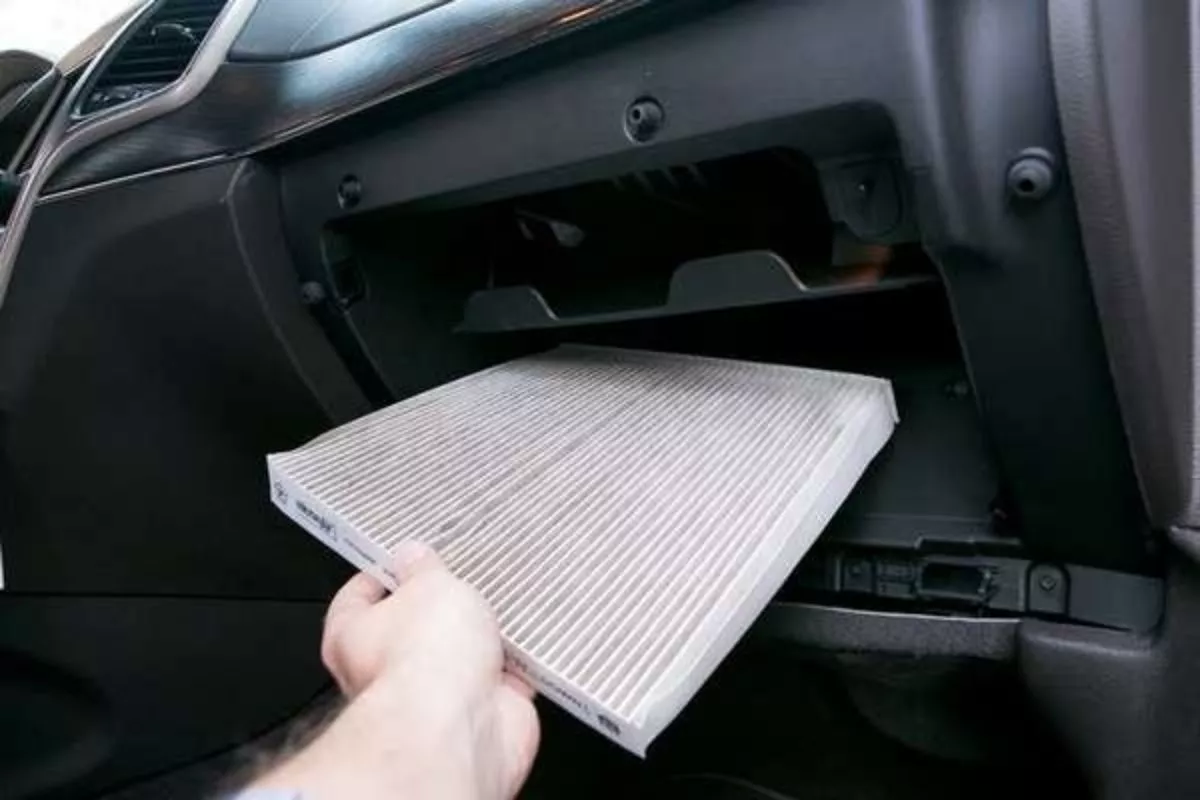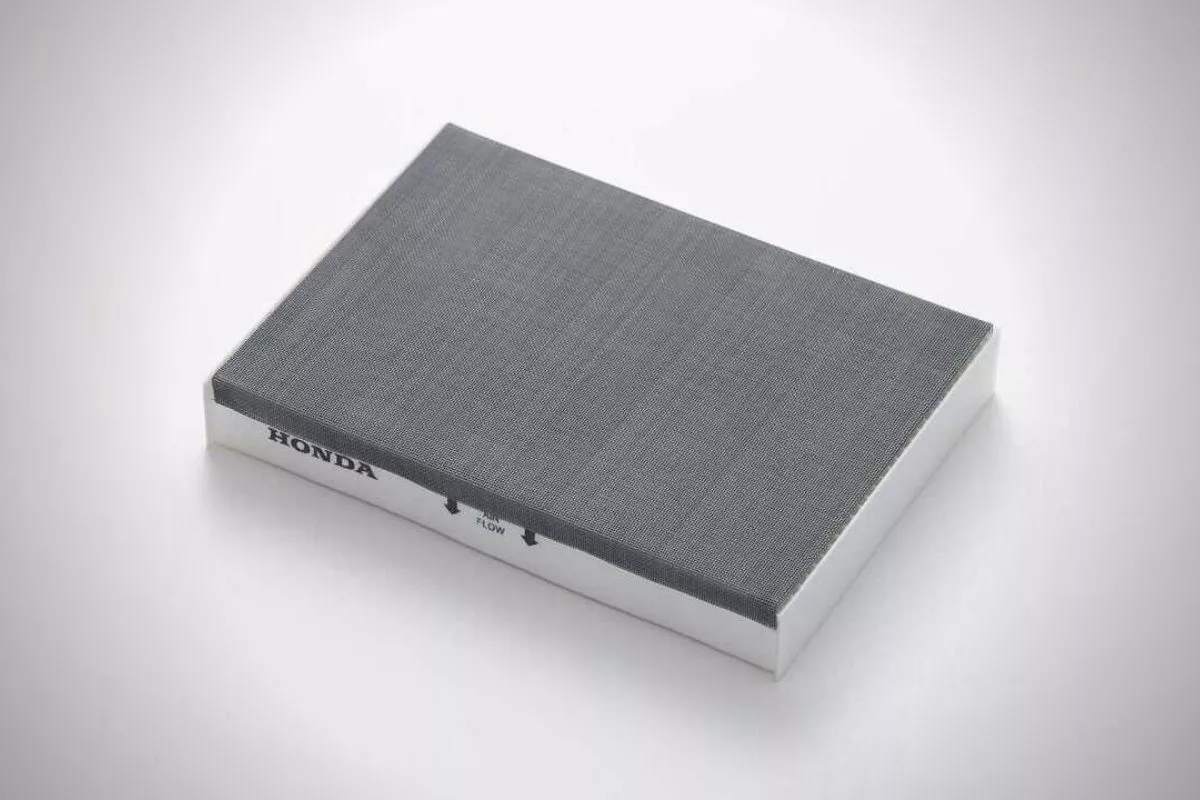Even if someone is just barely familiar with cars, they’ll know that a car needs several filters to work. There’s one for the oil, and another one for the car’s fuel.
These two, are of course liquid filters that sieve out debris and other gunk in order to keep the engine in tip-top shape.

This is an example of an engine air filter
Then there are the air filters, which the typical modern car will oftentimes have two. There’s the cabin air filter and engine air filter. So, why are these two important and how do they differ from one another?
Cabin Air Filter vs Engine Air Filter - All you need to know!
Engine Air Filter: Function
As we’ve established in various maintenance tips articles before, an internal combustion engine needs air to burn fuel. Air from outside your car however, can come with all sorts of debris like dust, insects, and many other contaminants.
To prevent those nasty stuff from entering the engine, most cars are fitted with an engine air filter. In modern cars, this part is usually housed inside the air filter box positioned in the engine bay. Others (mostly modified cars) might also come with exposed air filters that may come in many different shapes and sizes.

A genuine Toyota engine air filter
So, what happens if you run a car without an engine air filter? Well, the chance of the engine sucking in debris is increased.
This in turn increases the chances of damaging engine internals like the valves, cylinder walls, and pistons. In the long term, this will eventually result in loss of power, oil leakages, burning oil, and in the worst-case scenario, catastrophic engine failure.
>>> Related: 6 common kinds of car air filter & how to choose the best one
Symptoms of a failing engine air filter
Before even talking about symptoms, we recommend following the indicated maintenance interval written on your car’s handbook. Follow this closely, even if your car’s engine air filter looks “new and fresh.”
Doing this ensures that you won’t reach the point that you’ll have to watch out for the following symptoms:

A dirty engine air filter (left) and a new one (right)
- Loss of power - When an air filter is too dirty, damaged, or clogged, any engine will struggle to make or deliver power.
- Engine misfiring – A clogged-up air filter can mess up a car’s air/fuel mixture making it too fuel rich. This floods the engine and can cause misfiring. You might even experience starting trouble.
- Bad fuel mileage – If you notice that you’re spending too much on fuel more than the usual despite traveling your regular route, then your car might not be burning fuel efficiently. One cause of this is a dirty filter choking your engine’s oxygen flow.
- Check engine light – One of the many reasons a check engine light comes on is a failing air filter. This happens especially when the clogged/damaged air filters have begun to affect your engine internals. To be certain of the check engine light though, always double check using an OBD-II reader.
Cabin Air Filter: Function
A cabin filter is the only thing that keeps the air blown by your AC fresh and clean. It filters out dust, and other potentially harmful materials like pollutants and pollen. Without it, you’ll bet that the interior of your car will take on the carbon-filled, dusty smell of the road.

A cabin air filter being taken out from its box
>>> Related: What's a Cabin Air Filter and When Should you Replace it?
Symptoms of a failing cabin air filter
Note that a lot of modern cars come with its own cabin air filter warning light. In other cases, though, just watch out for these three signs:
- Bad or foul smelling air in the interior
- Diminished air and/or air circulation resulting in window fogging (in cold weather)
- Poor cooling
For the proper maintenance as to when to replace the cabin air filter, consult your car’s manual.
Cabin air filter vs engine air filter: Differences
Physically, a cabin air filter and an engine air filter can have some similarities. Both are contained in a box, and both are mostly made out of fiber paper cotton, spun fiberglass, or some other porous filtering material.
Most cabin air filters however, have much smaller holes than the engine car filter. This is because most models need a cabin air filter that can filter out something as small as pollen particles.
The biggest difference between cabin air filter vs air filter is of course their purpose. This is evident as to where they are positioned in the car.

Some manufacturers have made specialized cabin filters that can deal with bacteria and viruses
A cabin air filter is usually inside the cabin just behind the glove box or under the dashboard on the passenger side of the vehicle. In contrast to that, the engine car filter is located in the engine bay inside the air filter box.
Now you’re familiar with how a cabin air filter is different from an engine air filter. You now know why you need them, and what to look out for when they start to fail. But again, we urge you to read your car’s manual and take note of the recommended mileage for when to replace them.
For more helpful car maintenance tips, keep reading here on Philkotse.com.
Cabin air filter vs engine air filter: FAQ
1. How much is a replacement air filter here in the Philippines?
Answer: In the Philippines, a replacement engine air filter can cost somewhere in-between Php 300 to Php 1,200 and above for the premium aftermarket brands. Cabin air filters have a slightly higher price.
2. Where can I buy replacement air filters in the Philippines?
Answer: You can buy replacement engine and cabin air filters from most automotive shops nationwide. You can also buy one from your car’s dealership, or order one from any of the local e-commerce sites.
3. How do I replace my car’s engine air filter?
Answer: Replacing your car’s engine air filter is as easy as opening up your car air box, pulling out the filter and placing in the new one, then closing the box again. For the cabin air filter, it might require a bit of disassembly so consult your car’s manual for this.
4. What is the best air filter material?
Answer: The best air filters are the ones made out of spun fiberglass. These are reliable and durable, but at the same time are also affordable.
5. How often should I replace my car’s cabin air filter?
Answer: The usual recommendation from manufacturers as to when to replace a cabin air filter is around 48,280 km. To be certain, consult your car’s manual.
>>> Related: 8 telltale signs that you need to replace your air filter
Recent posts
- 3 basic ideas about car oil and oil filter Aug 09, 2022
- Replacing car air filter: Must-have skills that every Filipino driver needs to know Feb 23, 2021
- 9 steps to replace fuel filter on car Mar 16, 2021
- Cleaning the Air Filter: When and How Can I Do It? Feb 23, 2021












